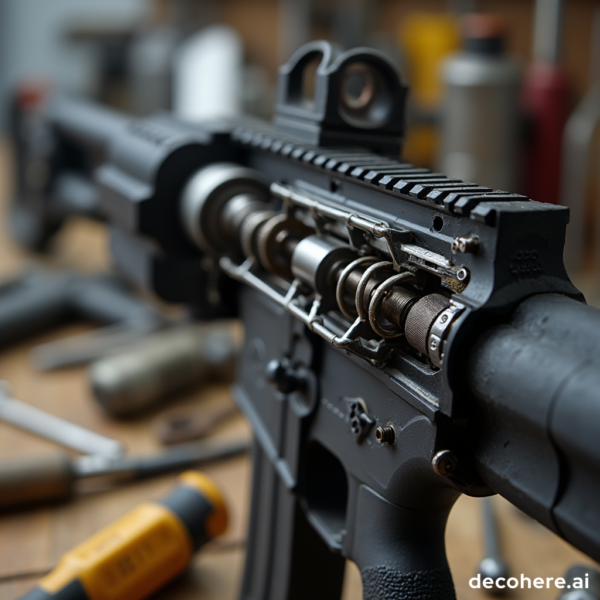Tesla Reliability 2025: Are Tesla Cars Dependable for Everyday Use?
Introduction: Understanding Tesla Reliability in 2025
Tesla has been at the forefront of electric vehicle (EV) innovation, but questions about reliability have followed the brand since its inception. In recent years, Tesla’s dependability has been under the microscope from both industry analysts and real-world drivers. If you are considering purchasing a Tesla or simply want to know how these vehicles hold up over time, this guide breaks down the most current and comprehensive findings, with practical steps for researching, comparing, and making informed decisions about Tesla reliability.
How Has Tesla Reliability Changed in Recent Years?
Historically, Tesla faced criticism for issues related to build quality, service delays, and frequent repairs. However, significant improvements have been documented in the last few years. According to the 2025 J.D. Power Vehicle Dependability Study, Tesla scored 209 problems per 100 vehicles (PP100), a marked improvement from 252 in 2024 and 242 in 2023. This shift means Tesla now outperforms established luxury brands like Audi (275 PP100) and Mercedes-Benz (218 PP100), although the brand still sits slightly below the industry average of 202 problems per 100 vehicles [1] [2] .

Source: thecooldown.com
These improvements are not just numbers on a chart. Many owners now report fewer issues with battery life, motor durability, and overall build quality. For example, long-term Model 3 owners have described five years of trouble-free driving, a positive sign that Tesla’s engineering is maturing [2] .
Tesla Model Rankings: Which Models Are the Most Reliable?
When breaking down reliability by model, the Tesla Model S stands out. According to iSeeCars’ analysis of over 12 million vehicles, the Model S is currently ranked as the most reliable electric car in its class, leading 1 out of 30 in the “Most Reliable Electric Cars” category. Across the board, Tesla’s electric cars receive an 8.2/10 reliability rating, placing the brand at the top of its segment for electric luxury vehicles [3] .
Other models like the Model 3 and Model Y have also shown significant improvement. Consumer Reports predicts average reliability for the 2025 Model 3, a notable step up from previous years where Teslas were often rated below average. This suggests that Tesla’s quality control measures are having a real impact, though prospective buyers should be aware that new models may still face early recalls or unforeseen issues [5] .
How Tesla Compares to Other Brands
In the context of the entire automotive industry, Tesla’s reliability has gone from a pain point to a relative strength. The 2025 J.D. Power rankings now place Tesla ahead of several well-known luxury carmakers. While Toyota and Lexus continue to lead in reliability, Tesla’s advancement from near the bottom to the middle of the pack is significant. Owners consistently report high satisfaction, even when minor issues arise, highlighting Tesla’s unique appeal and the company’s ability to address customer concerns over time [1] [2] .
It’s important to note that while Tesla’s scores have improved, some owners still experience problems with fit and finish, software updates, and service center availability. These challenges may vary by location and model year, so researching owner forums and recent reviews can provide additional insights.
Real-World Owner Experiences
Owner testimony is an essential aspect of understanding real-world reliability. For instance, one Model 3 owner reported no issues after five years, despite previously having recurring problems with other brands over similar lease periods [2] . On the other hand, some drivers have noted that while Tesla vehicles are dependable, getting timely service or replacement parts can present challenges, especially in areas with fewer Tesla service centers.
If you’re considering a Tesla, it’s helpful to connect with local owners through online communities, social media groups, or regional Tesla clubs. These resources provide firsthand accounts of reliability, maintenance, and support in your area.
What Prospective Buyers Should Know: Step-by-Step Guidance
1. Research Recent Reliability Data: Start by reviewing the latest results from J.D. Power, iSeeCars, and Consumer Reports. These organizations offer up-to-date ratings and owner feedback. You can search for the latest Tesla reliability reports on their official websites or through reputable automotive news outlets.
2. Compare Tesla Models: Examine how each model (Model 3, Model Y, Model S, etc.) performs in long-term reliability studies. The Model S currently leads Tesla’s lineup, but the Model 3 and Model Y are also rated as average or better in recent years.

Source: thecooldown.com
3. Check for Recalls and Service Notices: Always verify whether the Tesla model you’re interested in has active recalls. The National Highway Traffic Safety Administration (NHTSA.gov) maintains an updated database of recalls for all vehicle makes and models. Search for “Tesla” and your desired model year for the latest information.
4. Connect with Local Owners: Seek out local Tesla owner groups or online communities for real-world feedback on reliability and service experiences. These groups often share maintenance tips, recall notices, and advice on maximizing vehicle lifespan.
5. Consider Service Availability: Tesla’s direct-to-consumer sales and unique service model can be a benefit or a challenge, depending on your location. Research the distance to your nearest Tesla Service Center and inquire about mobile service options to ensure you’ll have access to timely repairs if needed.
6. Evaluate Long-Term Costs: While Teslas are known for low fuel and routine maintenance costs, unexpected repairs (especially out-of-warranty battery or electronics issues) can be expensive. Comparing total cost of ownership with traditional vehicles is a practical step for any buyer.
Challenges and Solutions: What to Watch Out For
Despite recent improvements, Tesla owners may face some ongoing challenges:
- Service Center Delays: In areas with high demand and few service centers, wait times for repairs can be longer than with traditional brands.
- Software Updates: Tesla vehicles receive over-the-air updates, which sometimes introduce new bugs or require additional fixes. Staying informed and following user forums can help you address these issues promptly.
- Parts Availability: Some replacement parts may take longer to arrive, especially for newer or rarer models. Planning ahead and maintaining regular service schedules can minimize disruptions.
Solutions include utilizing Tesla’s mobile service (where available), seeking advice from owner communities, and being proactive about software and recall updates.
Alternative Approaches: Comparing Other Electric Vehicles
If you are still uncertain about Tesla reliability, consider comparing Tesla to other leading EV brands like Hyundai, Kia, and Chevrolet. Toyota and Lexus, in particular, continue to set the standard for reliability across the industry, although their fully electric offerings are still expanding [4] .
To compare models, use tools from Consumer Reports, J.D. Power, and iSeeCars. These platforms allow you to review side-by-side ratings, owner reviews, and cost of ownership estimates for a range of electric and hybrid vehicles.
Key Takeaways: Is a Tesla the Right Choice for You?
Tesla’s reliability has improved significantly in the past few years. While early adopters faced challenges, most new models now deliver average or above-average dependability, with the Model S standing out as a category leader. Prospective buyers should research the latest data, consult owner groups, and consider service logistics before making a commitment. By following the steps outlined above, you can make a confident, informed decision about whether a Tesla fits your needs and expectations.
References
- [1] CarIQ Report (2025). Tesla Reliability: Legacy of Innovation, Test of Endurance.
- [2] Torque News (2025). Tesla Jumps Over 12 Brands In New 2025 J.D. Power Dependability Rankings.
- [3] iSeeCars (2025). Tesla Reliability Rating for 2025.
- [4] Tesla Motors Club (2025). J.D. Power Vehicle Dependability Slumps Overall, Tesla stays 4th from last.
- [5] Consumer Reports (2023). 2025 Tesla Model 3 Reliability.



